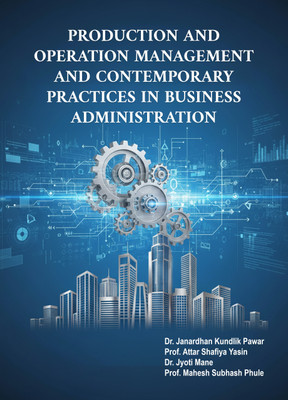PRODUCTION AND OPERATION MANAGEMENT AND CONTEMPORARY PRACTICES IN BUSINESS ADMINISTRATION(Paperback, Dr. Janardhan Kundlik Pawar , Prof. Attar Shafiya Yasin , Dr. Jyoti Mane, Prof. Mahesh Subhash Phule)
Quick Overview
Product Price Comparison
PRODUCTION AND OPERATION MANAGEMENT AND CONTEMPORARY PRACTICES IN BUSINESS ADMINISTRATIONThis widely adopted and well-established book, now in its Third Edition, provides the students of management and engineering with the latest techniques in production and operations management, considered so vital for maximizing productivity and profitability in business. What distinguishes the text is a comprehensive coverage of topics such as contract laws, capacity requirement planning, and vendor evaluation including quality function deployment, and enterprise resource planning.The new topics, which are of current interest, along with the characteristic features and easy-to-read style, would enhance the value of this text. The book is primarily intended as a text for postgraduate students of management, undergraduate students of mechanical engineering and undergraduate and postgraduate students of industrial, and production engineering courses. This profusely illustrated and well-organized text with its fine blend of theory and applications would also be useful for the practicing professionals.It covers topics like change management, customer-centric approaches, cross-cultural management, and turnaround and innovation management. For change management, it discusses concepts like planning, implementation, tracking and monitoring change. It also outlines important features like motivating change and creating a vision. For customer-centric approaches, it discusses strategies like building customer feedback programs and understanding impacts across functions. It addresses challenges of being customer-centric like operating in multiple regions and channels. For cross-cultural management, it defines global management and issues like failing to adapt practices across cultures. It also discusses the role and importance of acquisitions and mergers at international levels. Finally, it outlines turnaround techniques.

